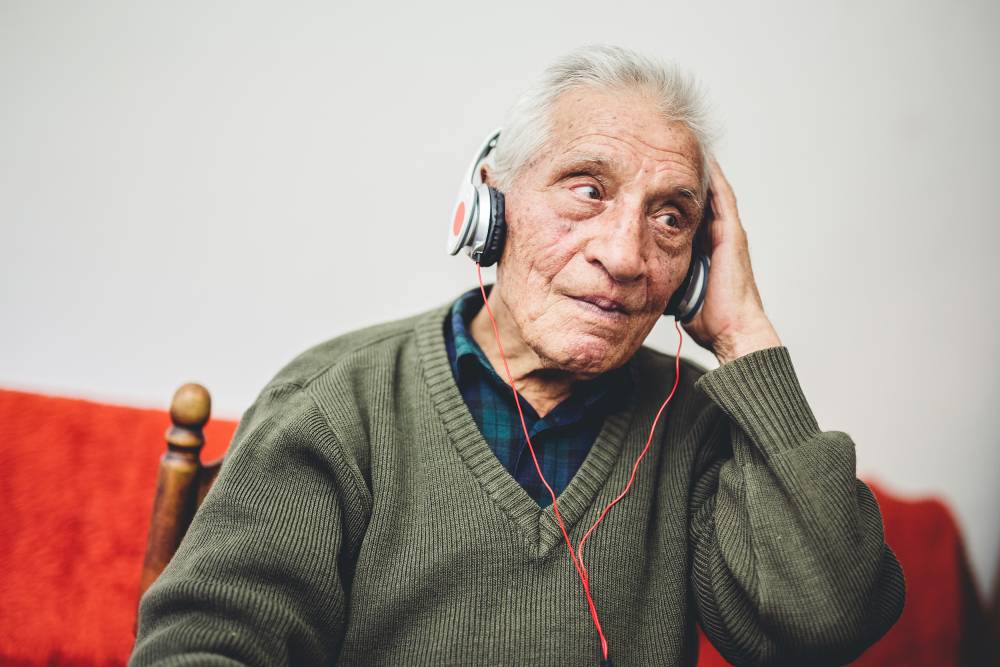
The Music & Memory program, developed by US social worker Dan Cohen and brought to life by the 2014 documentary Alive Inside, has thrust music therapy into the spotlight. I have had some fantastic experiences with personalised playlists and have prepared some advice to help you bring music into the world for somebody with dementia.
The Music & Memory program is backed by neuroscience research and has demonstrated that listening to a personalised playlist can help stimulate communication in people with dementia in a number ways:
“Someone who has been silent or less communicative may begin to talk and be more social.
Someone who has been sad and depressed may feel happier.
Someone who has been less mobile may become more physically active.”
Because dementia and other chronic cognitive illnesses affect more recent memories before early memories, listening to favourite music from earlier years can stimulate memories from that era. Once music has worked to begin a conversation, there is a strong possibility that the positive effects can be seen in other areas of communication, physical ability and an improvement in mood which can last for several days.
When Pop was in the mid stages of dementia he would sing, dance and tap his feet along to his personalised playlist. He’d smile, remember the names of his favourite musicians and tell me all kinds of stories. I’ll always smile fondly when I remember the day he refused to take his medication until after he’d finished singing Blue Moon or hear any of the songs we listen to. Now he’s in the late stages he still smiles and taps his feet. Sometimes he’ll have a short conversation with me and he always squeezes my hand tight while we listen.
Adolescence and early adult hood is often a time filled with high emotions, pleasurable memories, and is generally the time we fall in love. It makes sense that favourite songs from that time period help stimulate memories and communication as they are connected to strong emotions and treasured memories.
I first developed a personalised playlist for my Pop using the Spotify app on my phone. I already knew my Pop’s favourite songs and with the help of Spotify’s predictive song selection feature I was able to quickly build a playlist full of Pop’s favourite songs from the 50s and 60s.
Most researchers believe that using headphones is the most effective way to listen to a personalised playlist. Many people with dementia and cognitive illnesses have perception difficulties so listening to music through headphones will drown out background noises. Headphones will also allow you to listen to music without bothering anybody else around you.
There a couple of situations that I found listening to music without headphones to be more effective. Listening to music with a small group of people can stimulate conversation and encourage people to engage in positive social interactions. I have had many lovely afternoons with my Pop and a small group of residents and their families while listening to Pop’s music together. It’s also important to make the music isn’t overstimulating through the headphones, irritating, or stopping the person from wearing them from going to sleep.
Personalised playlists can bring tremendous benefits to people living with dementia. Music therapy can often strengthen the ability to communicate, participate in physical activities, and works to improve mood. I have found that the benefits of music therapy work best when combined with one on one or small group interactions. By listening to music together you will be able to get a clearer idea on which songs are the most effective and adjust your personalised playlist accordingly, ensure the music or headphones aren’t causing overstimulation or discomfort, and make some wonderful memories in the process.